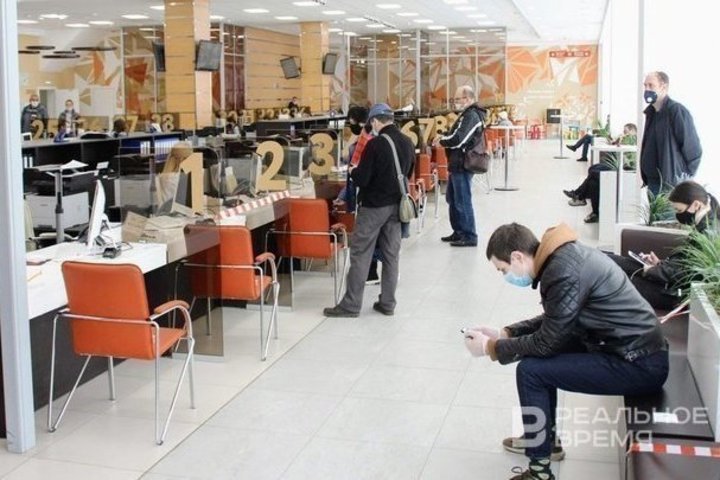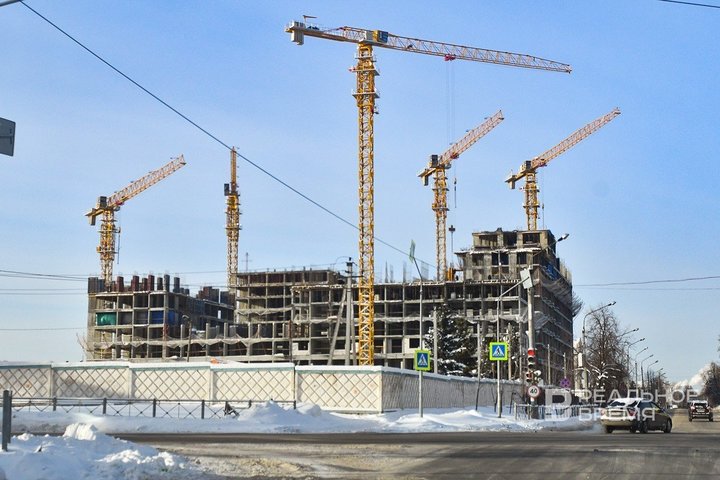Tatarstan residents set a record for number of personal bankruptcies
Experts forecast a further increase in the number of bankrupts among the indebted residents of the republic

The number of bankruptcy cases in Tatarstan has more than quadrupled since the pre-covid time. At the same time, the number of residents of the republic who were subject to personal bankruptcy in 2024 has increased almost sixfold. During this time, Russia introduced a moratorium on creditor-initiated bankruptcies twice, totaling one and a half years. However, any person who was subject to the moratorium had the right to refuse to apply it, therefore, even during this period, claims continued to be accepted and considered. The material of Realnoe Vremya tells about how and why the wave of bankruptcies has been growing in the republic over the past six years.
Moratorium did not help individuals
Realnoe Vremya found out that during 2024, the Arbitration Court of Tatarstan accepted more than 13,500 “bankruptcy” claims for consideration, which is 4.1 times more than in 2019. The lion's share — 93.6% — today is made up of individual bankruptcies, 5.7% — limited liability companies, 0.7% — individual entrepreneurs. In 2019, the last most successful year for business over a six-year period, only 3,300 bankruptcy cases were initiated, of which 67.7% were personal failures, 29.3% were PLC bankruptcies and 1.9% were sole proprietors.
During the pandemic, from April 6, 2020 to January 7, 2021, a moratorium was imposed on organisations and entrepreneurs that carry out their main activities in the sectors of the economy most affected by the coronavirus. And from April 1 to October 1, 2022, a moratorium on bankruptcy was introduced to support citizens and organisations due to the actions of unfriendly countries and the beginning of the SVO.
Businesses went bankrupt half as often
At the same time, during the moratorium period in 2020, the number of bankruptcies among individuals increased by 75% compared to 2019, and among legal entities it fell by 30%, in 2022, compared to 2021, the number of bankruptcies among individuals increased by 42%, and among legal entities it decreased by 30%. The past year 2024 showed a record increase in the number of personal bankruptcies — by more than 5.7 times compared to 2019, and by 42% compared to 2023. At the same time, the number of bankrupt legal entities, on the contrary, fell by 56%.
At the same time, if we compare the number of cases of financial insolvency of a business over the past 5 years, there is an interesting trend. If the reduced figures for 2020-2022 can be explained by the moratorium, then a significant decrease in the number of claims in 2024 (870), compared with 2023 (1,990), may be explained by the introduction of new requirements for applicants. In particular, in May 2024, the amount of debt for initiating bankruptcy of legal entities was increased from 300,000 rubles to 2 million.
Process has been simplified, but the responsibility has increased
The continuous growth in the number of personal bankruptcy cases over the past six years is explained by Mikhail Karpov, a lawyer from Kazan, as a result of the active development of the institution of personal bankruptcy in Russia starting in 2019, despite this option being available to individuals as early as 2015:
“As this institution developed, the procedure for personal bankruptcy became simpler. Arbitration managers specializing in these cases emerged, a simplified process was introduced, and it became possible to file for bankruptcy through multifunctional centers (MFCs). This option for relieving debt burdens was more widely advertised, and people began to use it more frequently.”

“A simplified process was introduced, making it possible to file for bankruptcy through multifunctional centers (MFCs). This option for relieving debt burdens was more widely advertised, and people started using it more frequently.”
The expert noted that serious changes have also taken place in the practice of judicial bankruptcy of companies, in particular those related to the involvement of founders and managers of companies in subsidiary liability, which threatens them with serious consequences. The risk of losing the right to hold senior positions for several years makes them try to avoid bankruptcy proceedings, especially if the company had some questionable transactions.
“In addition, the Federal Tax Service is very active in dealing with one-day firms," added Karpov. “The procedure for registering new legal entities has been complicated. If earlier it was possible to open a company, conduct some transactions through it, often illegal, and after a year simply forget about it, today the tax authorities cut off such companies already at the registration stage. As a result, the number of both registered legal entities and dubious legal entities has decreased, and, accordingly, the number of bankruptcy cases is decreasing.
An expensive undertaking
The bankruptcy procedure is quite expensive. Transactions that are disputed are subject to state duty, and if the debtor does not have the means to cover these costs, they are paid by creditors, who are less willing to take it upon themselves.

Mikhail Karpov believes that in the future, the trend of increasing personal bankruptcies and reducing corporate bankruptcies will gain momentum. He says that banks gained an additional incentive to bankrupt indebted borrowers: this procedure is the only way for them to review all transactions made by the debtors over the past three years, challenge them, and return the sold assets to the bankruptcy estate.
In addition, against the background of over-creditworthiness and rising loan rates, many borrowers can no longer, as before, re-credit to cover current payments — they simply cannot withstand the credit burden. Among the legal entities under threat of bankruptcy now, he noted, manufacturing companies with low margins may be the first.
“The trend will continue”
Rustem Shayakhmetov, an economist and head of R-Invest, explains the increase in the number of personal bankruptcies as an increase in the legal literacy of Russians and a drop in real incomes of the population:

Shayakhmetov stressed that a category of people has emerged who have begun to abuse the institution of personal bankruptcy — these are those who can pay off their loans, but prefer not to do so. And the problem of unfair bankruptcy, in his opinion, has yet to be solved.

Shayakhmetov, as well as Karpov, explains the decrease in the number of bankruptcies by imposing restrictions on managers and founders of bankrupt companies and large amounts of government support in a number of economic sectors.
“For example, developers used the right of bankruptcy very actively," he explained. “Now, after a number of scandals related to fictitious bankruptcies, there are fewer of them. Today, the founders are trying to avoid conflict with the state. But enterprises will always go bankrupt, it is a continuous process — someone is born, someone dies, and bankruptcy is an artificial termination of the life of the enterprise.
“They prefer a savings mode”
As for the forecast for the future, according to Rustem Shayakhmetov, the risk of bankruptcy is currently high for all enterprises that do not belong to priority sectors and cannot rely on subsidised loans.
"1.3 trillion rubles have been allocated in the federal budget to subsidise bank loans for enterprises, and Tatarstan provides tax preferences for businesses in the amount of about 7 billion. All these measures allow individual enterprises to stay afloat, but everyone else has high risks, because at a Central Bank rate of 21% they take loans at 30-40%, and this is a very high burden.

The expert of Realnoe Vremya attributed the car trade and trade in general to non-priority economic areas, that is, risky in terms of bankruptcy. In his opinion, the situation in construction is still unclear, since the existing problems can be solved by subsidising family mortgages and other mortgage programmes — if there are subsidies.

“Most of the innovative projects will not be implemented now," he suggested. “Now businessmen prefer the mode of saving rather than business development.”